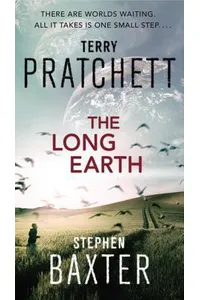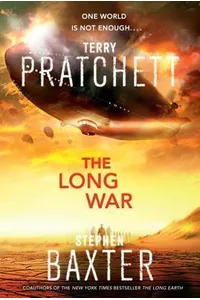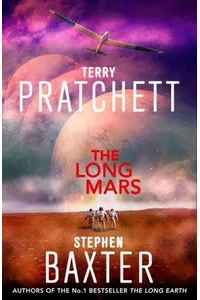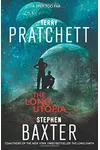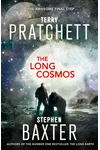Step into the thrilling world of The Long Earth, where a simple potato-powered device unlocks an infinite chain of parallel Earths, each brimming with possibilities! This captivating science fiction series, crafted by Terry Pratchett and Stephen Baxter, blends witty storytelling with mind-bending concepts, inviting readers to explore human nature, resource scarcity, and the allure of endless frontiers.
From the bustling streets of Datum Earth to pristine, uninhabited worlds, The Long Earth follows characters like Joshua Valienté, a natural 'stepper,' and Lobsang, an AI with a quirky Tibetan monk backstory, as they navigate a multiverse of wonder and danger. It’s a journey that’s as thought-provoking as it is adventurous!
How The Long Earth Began
The Long Earth sprouted from a seed planted by Terry Pratchett in his unpublished 1986 short story, 'The High Meggas.' While his Discworld series took off, this idea simmered until 2010, when a dinner conversation sparked a collaboration with Stephen Baxter, a master of hard science fiction. Their combined talents—Pratchett’s humor and Baxter’s scientific rigor—birthed a pentalogy that began with The Long Earth in 2012, blending fantasy’s warmth with sci-fi’s curiosity.
The Heart of The Long Earth
The series kicks off with The Long Earth (2012), where Joshua and Lobsang explore parallel Earths via a 'Stepper' device, encountering strange creatures and a looming threat. The Long War (2013) dives into political tensions as humans colonize these worlds, while The Long Mars (2014) ventures to a parallel Mars, unraveling cosmic mysteries. The Long Utopia (2015) and The Long Cosmos (2016) deepen the saga, exploring humanity’s evolution and a mysterious signal from the stars.
At its core, the series probes how humanity behaves when freed from resource constraints. Pratchett and Baxter weave themes of exploration, greed, and coexistence, set against a backdrop of Earths where dinosaurs never died or ice ages reshaped continents. Their style—Pratchett’s sly humor paired with Baxter’s vivid world-building—creates a narrative that’s both accessible and profound, appealing to fans of speculative fiction.
The setting, an infinite multiverse, feels like a playground for imagination. Each Earth varies slightly, offering fresh landscapes and challenges, yet none host Homo sapiens—only earlier hominids like trolls and elves. This absence prompts philosophical questions about humanity’s place in the cosmos, making the series a delightful mix of adventure and introspection.
Why The Long Earth Resonates
The Long Earth has carved a niche in science fiction, praised for its imaginative scope and social commentary. Fans on Goodreads laud its 'mind-blowing' concepts and well-developed characters, with Joshua’s wit and Lobsang’s quirky charm stealing the show. Though it never won major awards, the series’ blend of Pratchett’s humor and Baxter’s scientific depth has inspired readers to rethink progress and humanity’s impact on new frontiers.
Its legacy lies in its optimistic yet cautious vision of exploration. By imagining a world without scarcity, it challenges dystopian trends, offering a utopian lens that’s rare in modern sci-fi. For fans of Kurt Vonnegut or Douglas Adams, it’s a must-read for its blend of humor and big ideas.
- Publication Years: 2012–2016
- Number of Books: 5
- Authors: Terry Pratchett, Stephen Baxter
- Genre: Science Fiction
Ready to explore infinite worlds? Grab The Long Earth and dive into a sci-fi adventure that’s as witty as it is wondrous!
